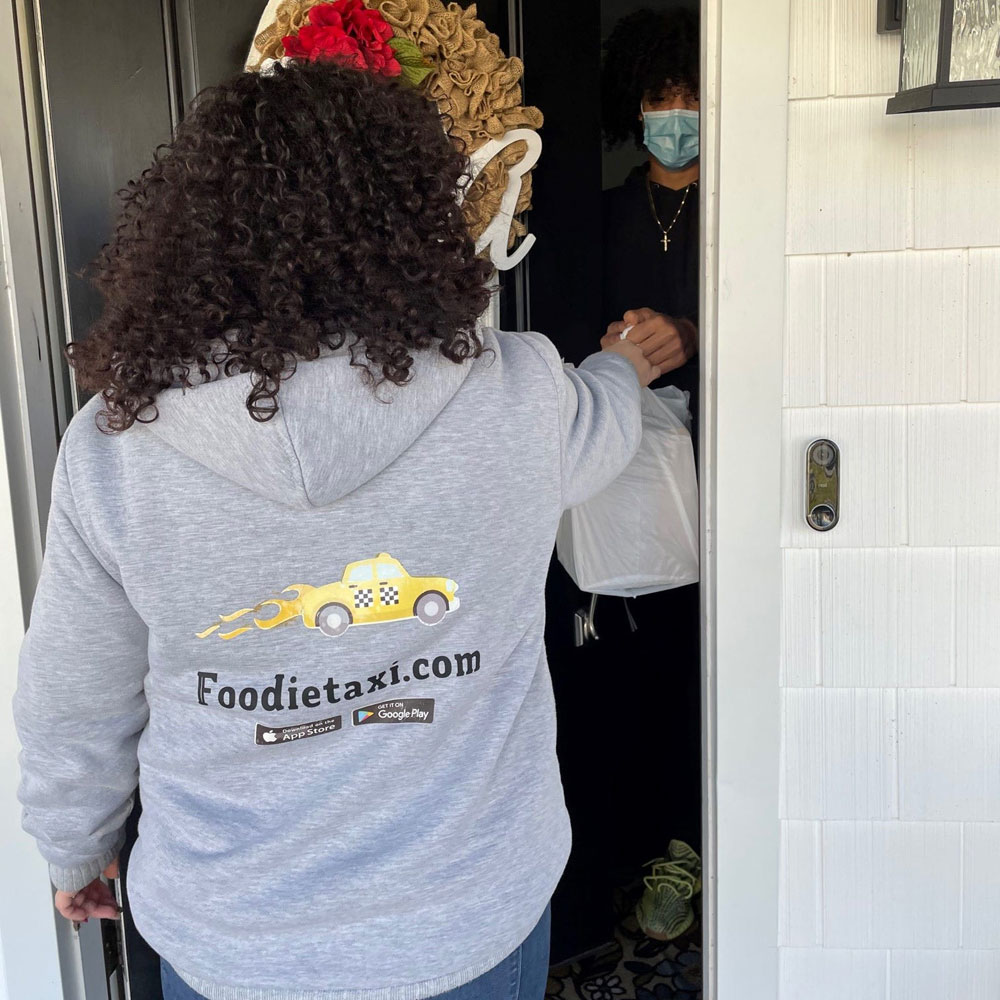
When the pandemic-induced economic shutdown hit the United States in March 2020, among the hardest hit businesses were restaurants. A National Restaurant Association report published last January estimated that 110,000 establishments had closed at least temporarily—and many permanently. That’s one in six restaurants nationwide. An estimated 2.5 million jobs were lost.
To survive amid shutdown orders and occupancy limits, many restaurants turned to takeout service and delivery. But they did so at a high price. According to a recent report by Kennedy Smith of the Institute for Local Self-Reliance titled Special Delivery, the standard delivery fee charged by national gig delivery services amounts to 30 percent of meal sales. By contrast, local restaurants’ profit margins typically range between three and six percent. Yet restaurants often feel compelled to rely on these delivery services. Smith reports that in 2020 three firms—DoorDash, Uber Eats, and Grubhub—controlled 93 percent of the restaurant food delivery market (DoorDash had a 45 percent market share, Uber Eats 30 percent, and Grubhub 18 percent).
A silver lining, however, is the emergence of local delivery services. Smith in her report profiles 20 of them—notably, 15 of the 20 firms she profiles were founded in 2020 or 2021. If you do the math, it is obvious that the market share of these upstart firms remains small. It is also highly likely that not every one of the new local firms will make it. After all, as the pandemic subsides and restaurants reopen to full capacity, the number of delivered meals is likely to fall. Nonetheless, many of these businesses may succeed, and if they do, they can help retain more wealth in local communities.
Writing in the Guardian, reporter Sophie Atkinson notes that the CoopCycle delivery service, which began in France in 2017, “now has 67 co-ops across seven countries in its ‘federation’ and has extended from Europe to Canada and Australia.” And, as Smith details, a similar movement has taken hold in many US cities.
Sign up for our free newsletters
Subscribe to NPQ's newsletters to have our top stories delivered directly to your inbox.
By signing up, you agree to our privacy policy and terms of use, and to receive messages from NPQ and our partners.
As Smith points out, all these businesses are based in some measure on a similar idea: If you are not seeking to extract large profits for Wall Street investors, that gives the business more room to charge local restaurants less and pay workers more. That said, a single dominant business model has yet to emerge. Instead, Smith outlines multiple distinct business models that are in development. These are as follows:
- Restaurant-owned cooperatives: Examples of these firms include Lexington, Kentucky-based Delivery Co-op and Dayton, Ohio-based 937 Delivers. And in these two firms, the drivers also have ownership shares. Both businesses use a subscription model rather than fees. Both charge restaurants a $300 monthly fee (rather than a percentage); for customers, the Kentucky co-op charges a monthly fee of $25, while the Dayton, Ohio co-op charges a per-use delivery fee of $6. The Dayton co-op, launched in November 2020, generated over $100,000 in food delivery orders by January 2021. Another set of restaurant-owned co-ops, patterned after a business named Chomp that launched in Iowa City in 2017 and spawned imitators in Omaha, Nashville, and Las Vegas during the pandemic, reduces the commission cost in half from 30 percent to 15 percent.
- Local private services: These businesses are owned locally, but restaurants are not co-owners. In terms of fee structures, Smith divides these into three categories: a) customer fee model (i.e., charge a service fee to the customer rather than subtracting the fee out of the restaurant’s take), b) membership or subscription fee models (like those that the Ohio and Kentucky co-ops use), and c) reduced commissions (similar to the Iowa City model). Smith identifies more than a dozen examples. Among these are local delivery firms in Kansas City, Missouri; Buffalo, New York; Austin, Texas; Astoria, Oregon; Long Beach, California; and Casper, Wyoming.
- Turnkey online ordering platforms: These are services that serve a back-end “app-like” function that facilitates the collection of delivery orders, but in which restaurants themselves hire the drivers directly and maintain responsibility for ensuring timely delivery. Typically, such firms charge restaurants a monthly fee for the service. An example of such a company is Sociavore, which charges a $49 monthly fee for restaurants plus credit card processing costs.
Why Local Ownership Matters
In her report, Smith outlines some of the benefits of local ownership. Among these are greater accountability to local restaurants (especially obvious in the case of restaurant co-op-owned services), a tendency to pay drivers more, and keeping profits earned in the community. Another, perhaps less obvious benefit of the local services, observes Smith, is that customer data is shared with the restaurants, whereas firms like Uber Eats and DoorDash own and control sales and customer data.
Smith notes that state and local governments can help support local firms by, for example, setting industry-wide limits on delivery fees. According to Smith, during COVID, “more than 60 US cities, ten counties, and four states” set caps on delivery fees, with the most common limit set being 15 percent. Smith acknowledges these caps were designed to expire after the pandemic emergency was lifted but adds that some states and cities are considering making them permanent, recognizing the damaging effect these high fees can have on local restaurant operations.











